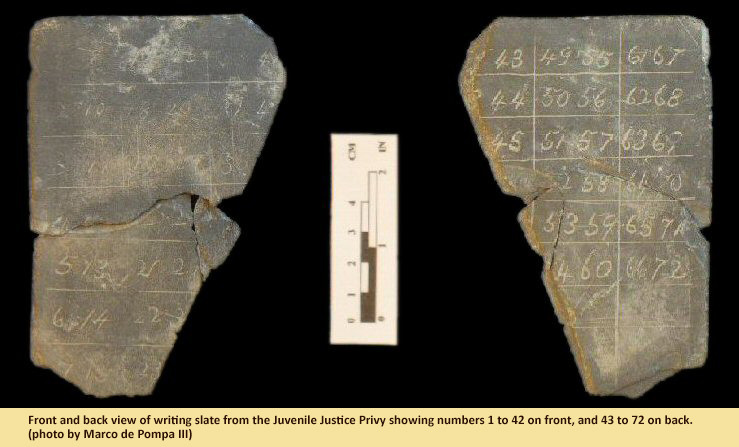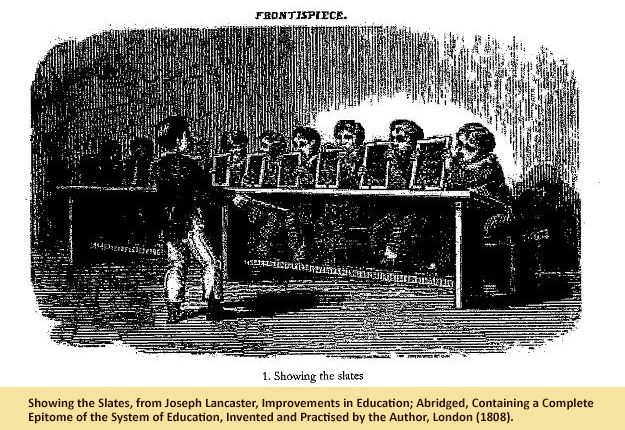Maryland Archaeological Conservation Laboratory
Main_Content
Curator's Choice 2008
Writing Slate
September 2008
By Patricia Samford, MAC Lab Director
Archaeologists working on historic sites often find fragmented slate pencils once used on writing slates. It is less typical to recover flat pieces of the slate used as writing surfaces. Excavations at the site of
the Juvenile Justice Center in Baltimore City (18BC139), however, yielded a slate whose educational function is quite clear.

Recovered from a privy that was filled between 1815 and 1830, this slate was scored front and back with a grid. Incised within the grid sections were numbers from 1 to 72. The unworn, cleaner areas along the finished top and side edges of the slate suggest it had originally been set into a wooden frame. Although fragmentary, the slate's original dimensions were approximately 4 x 6 inches.
Because slate could easily be split into thin sheets, it was well suited as a substitute for paper. Also more durable and economical than paper, slate could be wiped clean and re-used indefinitely. Pencils
of soft slate, soapstone, pressed clay or chalk were used to write on slate. Writing slate production was a big industry in Wales in the nineteenth century and slates were available plain, or with
incised lines, grids, or even simple maps. Bound slate books, made from thin, small (3" x 5") sheets of slate, were sometimes used by adults in their workplaces.
Although the Oxford English Dictionary provides a date in the late fourteenth century as the first reference to slate as a writing tool, the use of slate in this fashion was not common until the eighteenth century
(Hall n.d.). Stationers were selling slates by the second half of the eighteenth century, but there is no real evidence to support their educational use by children until the nineteenth century (Hall
n.d.:6). Research suggests that Joseph Lancaster, an English proponent of mass education, was at least partly responsible for the widespread development of slate as an educational tool beginning in the early
nineteenth century (Hall n.d.).
